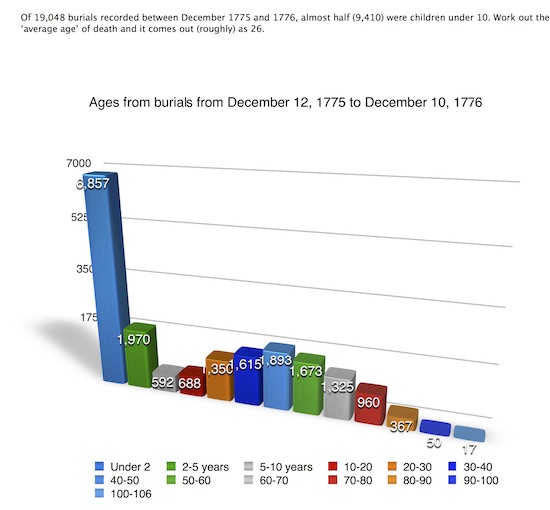The idea that people in olden days didn’t make it into old age says a lot about statistics and less about actual life expectancy facts.
The average, in maths, is what you get when you add up the figures for all instances, and divide them by the number of instances. So, 2 + 2 + 7 + 7 = 18 and the average is 18 divided by 4, ie 4.5.
If the instances are 2 + 2 + 60 + 60, then it’s 124 divided by 4 and the average is 31, which bears little similarity to the instances of 2 or 60.
And that’s where average life expectancy falls apart.
Put simply, a high number of baby and infant deaths is doing to drag down the average age.

Famed for vigour and health
In fact, before the safety net of old-age pensions, people could still be working in their 70s, if fit enough.
In October 1844, it was reported in the Carlisle Journal that octogenarian John Rothery, of Egremont Town Head, had taken his place in the harvest field of Mrs Banks of Langhorn. He’d worked for the family for many years. This season, he cut down 12 stooks a day for several days in succession. The journal adds that the county is famed for the vigour and health of many of its aged inhabitants.
And a look at death notices, gravestones, and parish registers shows the Biblical idea of ‘three score years and ten’ was a perfectly normal lifespan in the 18th and 19th centuries. If, that is, you survived the perils of infancy. And if you were a married woman, also survived multiple pregnancies and childbirths.

Death notices in the Carlisle Journal of September 20, 1845, include:
Robert Studholm, of Biglands, Aikton, aged 12; at Tamworth, Edward Henry Savage, 2, Frank Storr Savage, 1, and Elizabeth Savage, 5, all of scarlet fever – children of the Rev RC Savage, vicar of Nuneaton; infant daughter of the Countess of Rosse, Ireland, aged four days. One can only begin to imagine how unbearable it was to lose three children over the space of a fortnight.
But there are also Joseph Jackson, of Waverton, 77; John Carruthers, Lowthian Gill, 71; Richard Bowes, Cockermouth, 83; Widow Mary Melville, Keswick, 84; Joseph Hodgson, Great Braithwaite, 75; James Brougham, Kirby Stephen, 71; the mother of M Arago, Eastern Pyrenees, 91; Rev John Knipe, Lincoln, 80…
And there are two centenarians.
War veterans and a seventh son
Colonel Cromwell Massey, late of the Hon. East India Company’s service, died in Ramsgate, aged 103.
He’d survived a bloody battle in Mysore, in 1780, and almost four years in dreadful conditions in the dungeons at Seringapatam.
The second, who died in Ross-shire, Sotland, was Donald Ross, aged 115. Said to have retained possession of all his faculties, and to have enjoyed uninterrupted good health till within a few days of his death, his memories included the rebellion of 1745.
The parish register of Beaumont, Cumberland, records a family who clocked up a good few years between them.
Joseph Norman was recorded in the registers as the seventh son of John Norman, of Beaumont. Born about 1718, he died 1812, aged 94. One brother, John, died in 1783 aged 76. Another brother, Edward, died in 1807, aged 95.
And a further centenarian was recorded in 1801, in the person of Eleanor Liverick, of Brampton. Like Mary Noble on the Penrith gravestone, it’s probably superfluous to add she was a widow!


 First published Feb 2018
First published Feb 2018